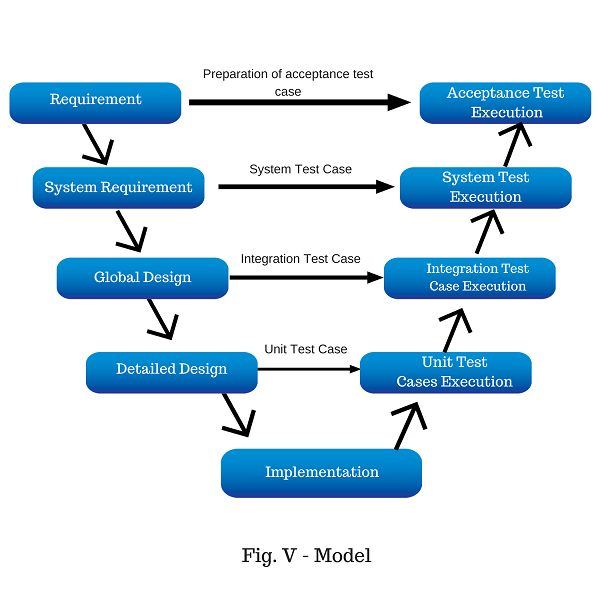Note: This is guest post from Stella – Content Writer and Digital Marketing Analyst at Indium
Software testing refers to a technique in which an application or software is tested before launching in the market to ensure that it is free from all errors and bugs.
Software testing contributes to being a series of different processes which are helpful in investing as well as evaluating the quality of the product. It helps in ensuring that the software is developed while keeping the user, functional, business, technical and regulatory requirements in mind.
Software testing refers to a wide process which is inclusive of a plethora of connected processed. Three things, which you need to check during the process of software testing, include the software completeness about the functional requirements, finding the technical errors and ensuring that the product is free from bugs.
It is also beneficial in assessing the performance, usability, localization, security, installation, and compatibility of the software before it is released in the market. Software QA and testing makes use of a plethora of testing approaches which include functional testing, integration testing, regression testing, system testing, stress testing, load testing, acceptance testing, and usability testing.
It is possible to perform software testing manually or with the aid of different automated tools. The methods which are used for testing the software include black box testing, white box testing, and grey box testing.
Here is a list of few of the guidelines you need to follow during testing of a software:
#1: Developers should refrain from testing the software

If you are planning to launch a product in the market, it is a prerequisite to hire professional testers for testing the product. The developer team should not be allowed to perform the testing of the software. It is because the developer has spend an ample time in developing the software. Hence, after spending several hours in developing the software, they might be too proprietarily unconsciously about it.
Hence, they may fail to find the flaws or errors in the system. The professional testers, on the other hand, have a destructive approach towards the certain application or software. Developers can be allowed to conduct integration testing and unit testing. However, the testing of the software should be performed by the professional testers only.
#2: Software can never completely free from errors and bugs
Though testing is a must before releasing a product in the market, testing cannot ensure that a product is completely free from errors. To be precise, there is no specific way that can be adopted to ensure that the software is devoid of errors and bugs, even after developing a wide array of test cases.
#3: Start testing at the earliest

It is a prerequisite that testing should begin along with the requirement analysis process parallel. This step is vital to avoiding the issues of defect migration. It is crucial to determine the scopes and the test objects at the earliest, without wasting any time.
#4: Give a priority to sections
If there are specific critical sections, you can ensure to test the sections with the highest priorities at the earliest.
#5: There is a limit on the available time
The time that can be given for testing specific software is limited. You need to remember that you do not have limitless time to test the software. Hence, it is crucial to carry out an effective test plan before the beginning the testing process. You need to decide on some criteria so that you know when to terminate the testing process. You need to decide the criterion, before the starting of the test process.

#6: Testers should ensure to conduct testing with unexpected negative inputs
Apart performing testing with various flawed test cases, you can continue the same with correct test cases and data as well. This is vital to ensure that the software is free from leaks. Testers should also make sure to document the test cases perfectly for ensuring the future reuse for testing at various stages.
It indicates that the test cases should be enlisted along with proper definitions as well as description of passed inputs along with the expected outputs. You should make sure to perform testing for the non-functional and functional requirements of the software.
#7: Make sure to inspect the results of the test properly
It is a prerequisite to perform a quantitative assessment of the tests as well as their results. You should refer to the documentation properly at the time of validating the results of the test cases to ensure proper software testing.
You should ensure to support software testing by the automated techniques and tools. In addition to ensuring that the system is performing in the way in which it is supposed to, it is a prerequisite to make sure that the software does not perform any of the operations, which it should not.
#8: Validations of the assumptions

You should refrain from developing the test cases, according to hypothesis or assumptions. It is a prerequisite to validate the test cases properly. For instance, if you assume that the specific product is free from errors and design the test cases likewise, there are high chances that extremely weak test cases will get developed.
After developing software, you need to double check everything before launching the product in the market. It is crucial to appoint a tester team which will test every aspect of the software. They invest their efforts and time and make the best use of their knowledge to ensure that the product is free from errors and defects.
With software testing, you can find the specific errors and flaws, which occur during the development stage. It also plays a vital role in ensuring that the software is providing the prerequisite performance and the end user are satisfied with it completely.
With the strict execution of test cases, software testing plays a vital role in ensuring lower maintenance cost. You cannot afford any failure as it might prove to involve a huge cut off from the pocket at the later phase of software development. If you are planning to test the software, it is recommended to adhere to the above mentioned guidelines.
About Author
Stella is a Content Writer and Digital Marketing Analyst with a demonstrated history of working in the Tech industry. She has written articles on testing, big data, analytics and latest trends in the tech world. She likes to try different cuisines and travelling to new places.

Leave a Reply